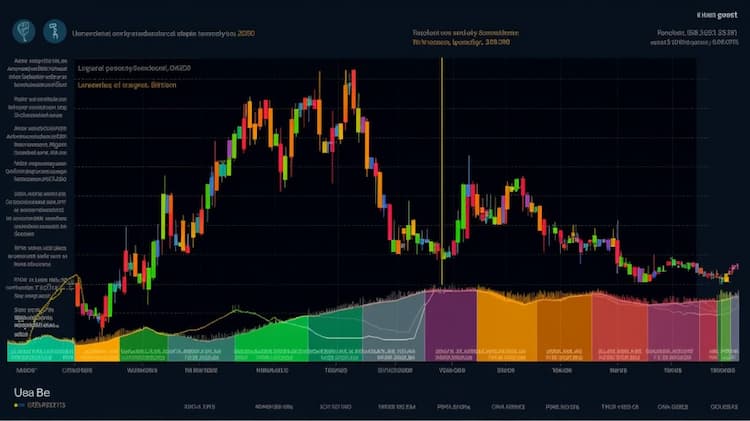
What are the best bonds ETFs?
The best bonds exchange-traded funds (ETFs) offer investors an avenue to invest in fixed-income securities and potentially earn stable income while managing risk. These ETFs provide exposure to a diversified portfolio of bonds, including government bonds, corporate bonds, and municipal bonds. Some popular choices among investors include ETFs that track broad bond indexes such as the Bloomberg Barclays U.S. Aggregate Bond Index or focus on specific segments like high-yield bonds or inflation-protected securities. These ETFs can offer investors the opportunity to access the bond market efficiently and diversify their investment portfolios.
Comparing the iShares Core U.S. Aggregate Bond ETF (AGG) with Similar Bond ETFs
When it comes to investing in bonds through exchange-traded funds (ETFs), the iShares Core U.S. Aggregate Bond ETF (AGG) stands out as a popular choice. AGG, managed by BlackRock, is designed to track the performance of the Bloomberg Barclays U.S. Aggregate Bond Index. This ETF provides investors with exposure to a broad range of investment-grade U.S. bonds, including government, corporate, and mortgage-backed securities.
Compared to other bond ETFs, AGG offers several advantages. First, it has a low expense ratio, making it cost-effective for long-term investors. AGG also has a large asset base, ensuring sufficient liquidity for investors to buy and sell shares without significant price impact. Furthermore, the ETF has a solid track record of performance, reflecting the overall performance of the U.S. bond market.
However, it's important to note that there are other bond ETFs that may suit different investment objectives. For example, the Vanguard Total Bond Market ETF (BND) and the SPDR Portfolio Aggregate Bond ETF (SPAB) are two alternatives worth considering. BND aims to track the performance of the Bloomberg Barclays U.S. Aggregate Float Adjusted Index, while SPAB seeks to replicate the performance of the Bloomberg Barclays U.S. Aggregate Bond Index. These ETFs provide exposure to a similar asset class but may differ in terms of expense ratios, trading volume, and composition.
What Factors Should You Consider When Choosing a Bond ETF?
When selecting a bond ETF, there are several factors to consider. These factors can help investors align their investment goals with the right ETF for their portfolio. Here are some key considerations:
Expense Ratio The expense ratio represents the annual cost of owning an ETF. Lower expense ratios can potentially enhance long-term returns.
Index TrackingUnderstanding the index that an ETF aims to replicate is crucial. It determines the type of bonds included, such as government bonds, corporate bonds, or a mix of both.
Yield The yield reflects the income generated by the underlying bonds in the ETF. Investors seeking regular income may prioritize higher-yielding bond ETFs.
Diversification: A well-diversified bond ETF spreads the risk across multiple issuers and sectors. This diversification can help mitigate the impact of default or credit rating changes.
 bonds ETFs, AGG,BND overlap What are the best bonds ETFs?
bonds ETFs, AGG,BND overlap What are the best bonds ETFs?
How Can Bond ETFs Fit into Your Investment Strategy?
Bond ETFs can play a valuable role in an investor's portfolio by providing exposure to fixed-income securities. They offer diversification, liquidity, and ease of trading compared to individual bonds. Here are a few ways bond ETFs can fit into your investment strategy:
Income Generation Bond ETFs can be used to generate regular income through the coupon payments made by the underlying bonds. This can be particularly useful for investors seeking a steady cash flow.
Capital Preservation Bond ETFs can be an attractive option for investors looking to preserve capital while generating modest returns. They are generally considered less volatile than equities, offering a potential safe haven during market downturns.
Portfolio Diversification Including bond ETFs in a diversified investment portfolio can help reduce overall portfolio risk. Bonds often have a negative correlation with stocks, meaning they can act as a hedge against market volatility.
Interest Rate Management Bond ETFs can be used to manage interest rate risk. When interest rates rise, bond prices tend to decline. By adjusting the duration or maturity of bond ETF holdings, investors can potentially mitigate the impact of interest rate changes.
Conclusion
When considering the best bond ETFs, the iShares Core U.S. Aggregate Bond ETF (AGG) stands as a popular choice. However, there are other options available, such as the Vanguard Total Bond Market ETF (BND) and the SPDR Portfolio Aggregate Bond ETF (SPAB), each with its own unique features and advantages.
When choosing a bond ETF, investors should consider factors such as expense ratios, index tracking, yield, and diversification. Bond ETFs can fit into an investment strategy by generating income, preserving capital, diversifying a portfolio, and managing interest rate risk.
Please note that this article is for informational purposes only and does not provide any investment advisory services.
Sources:
BlackRock - iShares Core U.S. Aggregate Bond ETF (AGG)
Investopedia - Bond ETF
FAQ
What are the Best Bonds ETFs?
The best bonds ETFs include funds such as the iShares Core U.S. Aggregate Bond ETF (AGG), Vanguard Total Bond Market ETF (BND), and iShares iBoxx $ Investment Grade Corporate Bond ETF (LQD). These ETFs are highly regarded for their exposure to a diversified portfolio of bonds and their ability to track bond market performance.
What is the iShares Core U.S. Aggregate Bond ETF (AGG)?
The iShares Core U.S. Aggregate Bond ETF (AGG) is an ETF designed to track the investment results of the Bloomberg Barclays U.S. Aggregate Bond Index. It offers investors exposure to a broad range of investment-grade U.S. bonds, including government bonds, corporate bonds, and mortgage-backed securities.
What is the Vanguard Total Bond Market ETF (BND)?
The Vanguard Total Bond Market ETF (BND) is an ETF that aims to track the performance of the Bloomberg Barclays U.S. Aggregate Float Adjusted Index. It provides investors with exposure to the broad U.S. investment-grade bond market, including government, corporate, and securitized bonds.
What is the iShares iBoxx $ Investment Grade Corporate Bond ETF (LQD)?
The iShares iBoxx $ Investment Grade Corporate Bond ETF (LQD) is an ETF that seeks to track the investment results of the Markit iBoxx USD Liquid Investment Grade Index. It focuses on investment-grade corporate bonds issued by U.S. companies, providing exposure to the corporate bond market.
What are the advantages of investing in bonds ETFs?
Investing in bonds ETFs offers several advantages, including diversification across different types of bonds, ease of trading on the stock exchange, potential for income through coupon payments, and the ability to tailor the duration and risk profile of the fixed income exposure to suit investment objectives. Bonds ETFs can serve as a potential source of stable income and act as a defensive component in a diversified portfolio.
































